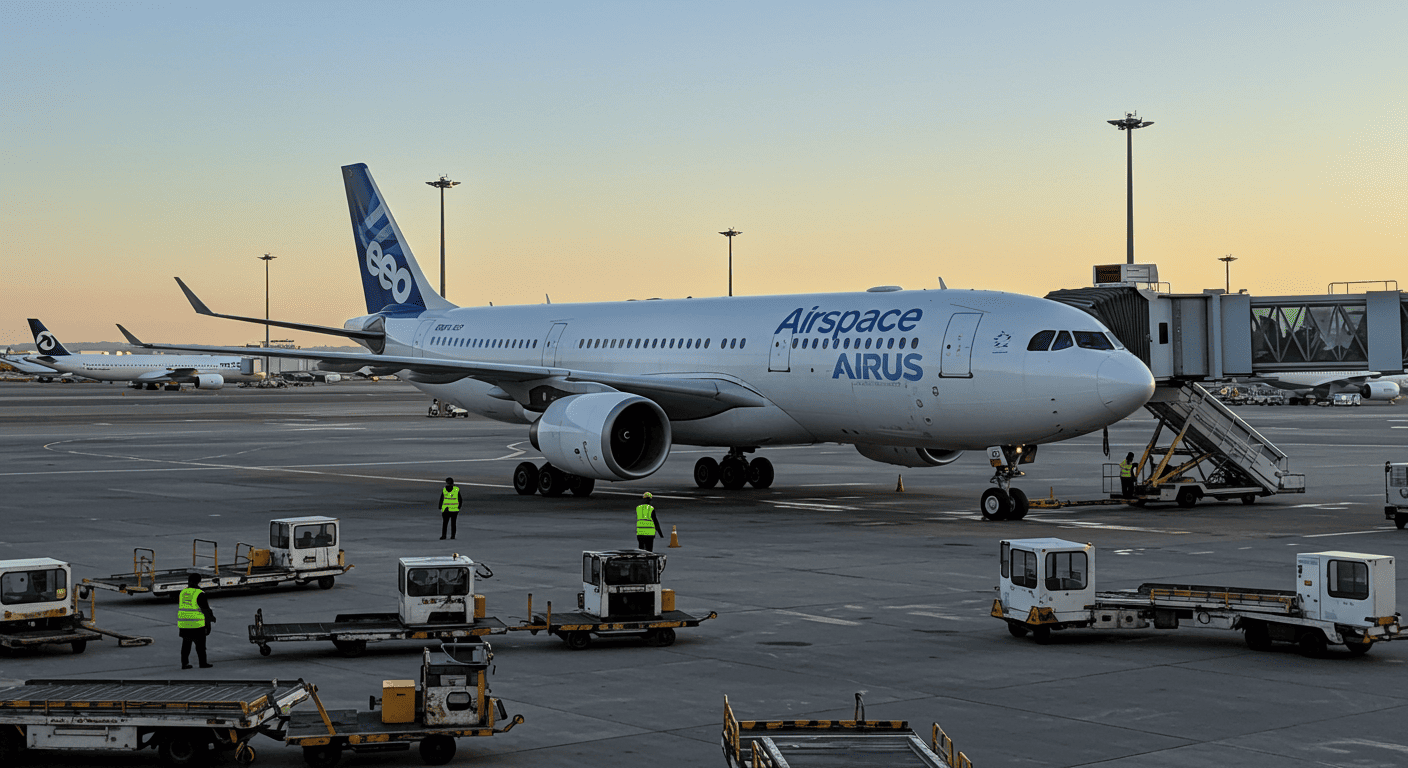Blending the reliability of a proven airframe with next-generation efficiency, the Airbus A330-900neo has become a standout choice in modern long-haul travel. With its advanced Rolls-Royce engines and passenger-focused Airspace cabin, it offers an excellent balance of performance and comfort. Explore the specifications, features, and routes that define this impressive aircraft.
Aircraft engine stands for rent
Overview of the Airbus A330—900neo
The Airbus A330-900neo represents a significant evolution of the acclaimed A330 wide-body family, combining proven reliability with next-generation technology.
Key technological advancements distinguish the A330-900neo, most notably its exclusive Rolls-Royce Trent 7000 engines and significant aerodynamic optimizations.
The A330neo family consists of two main variants that differ in capacity and range:
- A330-900: The larger model, which retains the fuselage length of the A330-300.
- A330-800: The shorter model, which is based on the A330-200 fuselage.
Inside, the innovative Airspace cabin transforms the passenger experience with features designed for passenger comfort and convenience, including:
- Significantly larger overhead storage bins
- Advanced LED mood lighting to help reduce jet lag
- A quieter cabin atmosphere for a more relaxing journey
Specifications of the A330—900neo
Designed to achieve an optimal balance of range, capacity, and efficiency, the Airbus A330-900neo is a versatile wide-body aircraft ideal for medium- to long-haul routes.
In a typical three-class configuration, the A330-900neo accommodates between 260 and 300 passengers.
Key performance metrics for the aircraft include:
- Maximum Range: 7,200 nautical miles (13,334 km)
- Maximum Takeoff Weight (TOW): 251 tonnes
- Engines: Two Rolls-Royce Trent 7000, each providing up to 72,000 pounds of thrust
The aircraft’s primary dimensions are:
- Wingspan: 64 meters (including Shark lets)
- Length: 63.66 meters (same as the A330-300)
- Cruise Speed: Mach 0.86
Performance metrics of the A330—900neo
The aircraft excels in efficiency through the aircraft’s performance, with its Rolls-Royce Trent 7000 engines reducing fuel consumption and CO2 emissions by approximately 25% compared to previous-generation aircraft.
Cabin Design and Comfort Features
Passenger experience in the A330—900neo
Passengers enjoy a range of modern amenities designed for a connected and comfortable journey:
- Entertainment: High-definition 4K touchscreens at every seat.
- Connectivity: USB power outlets and onboard Wi-Fi access.
- Seating: Ergonomically designed seats with features like adjustable headrests for greater personal space.
- Quiet Cabin: A serene atmosphere that minimizes travel fatigue on long-haul journeys.
Airbus A330—900neo Routes and Operators
Since its debut with launch operator TAP Air Portugal, the A330-900neo has become a popular choice for modernizing long-haul fleets.
As a dedicated long-haul aircraft, the A330-900neo is designed to connect continents efficiently.
Building on the A330 family’s proven reliability, the A330-900neo has quickly established a strong operational record, with airlines praising its dependable performance as its presence on global routes continues to expand.
Comparative Analysis with Competitors
In the competitive mid-size wide body market, the Airbus A330-900neo competes directly with major competitors: the Boeing 787 Dreamliner and its corporate sibling, the Airbus A350.
The aircraft’s primary competitive advantage is its economic efficiency, driven by the exclusive Rolls-Royce Trent 7000 engines.
When comparing performance, the A330-900neo achieves a careful balance between range, capacity, and cost.
Beyond the numbers, the A330-900neo competes strongly on passenger experience and operational flexibility.
Future Developments and Variants
While the A330-900neo will serve airlines for decades, Airbus is already planning for the next era of aviation, with a forward-looking strategy that emphasizes sustainability and innovative technology for its future wide body platforms.
Much of this future-focused development is emerging from projects for other aircraft families, which serve as test beds for technologies that will likely define the A330neo’s successor.
Central to these efforts is the “Wing of Tomorrow” project, a major research initiative aimed at developing advanced composite wings.
Additionally, Airbus is exploring alternative propulsion systems to meet sustainability targets, with heavy investment in:
- Hybrid-electric flight
- Hydrogen-powered flight
These technologies could enable the development of a zero-emission successor to the A330neo. While the A330-900neo represents peak current-generation efficiency, Airbus is already preparing the foundation for its replacement.
Read more:
- Airbus A320: Specifications, Features, and Seat Maps
- Airbus A340-300: Features, Specifications, and Performance
- Airbus A220: Features, Specs, and Benefits of the A220 Family
- Airbus Beluga: The Unique Transport Aircraft
- Airbus A340-600: Features, Specifications, and Performance
- Airbus A350: Features, Specs, and Innovations
- Airbus A319: Specifications, Seat Maps, and Features
- Airbus A321neo: Features, Specs, and Benefits
- Airbus A321: Specifications, Features, and Seat Maps
- Airbus A380: The Ultimate Guide to the World’s Largest Passenger Aircraft
- Airbus A330-300: Specifications, Seat Maps, and Amenities
- Airbus A350-900: Features, Specs, and Seating Guide
- Airbus A330: Specifications, Features, and Seat Maps

